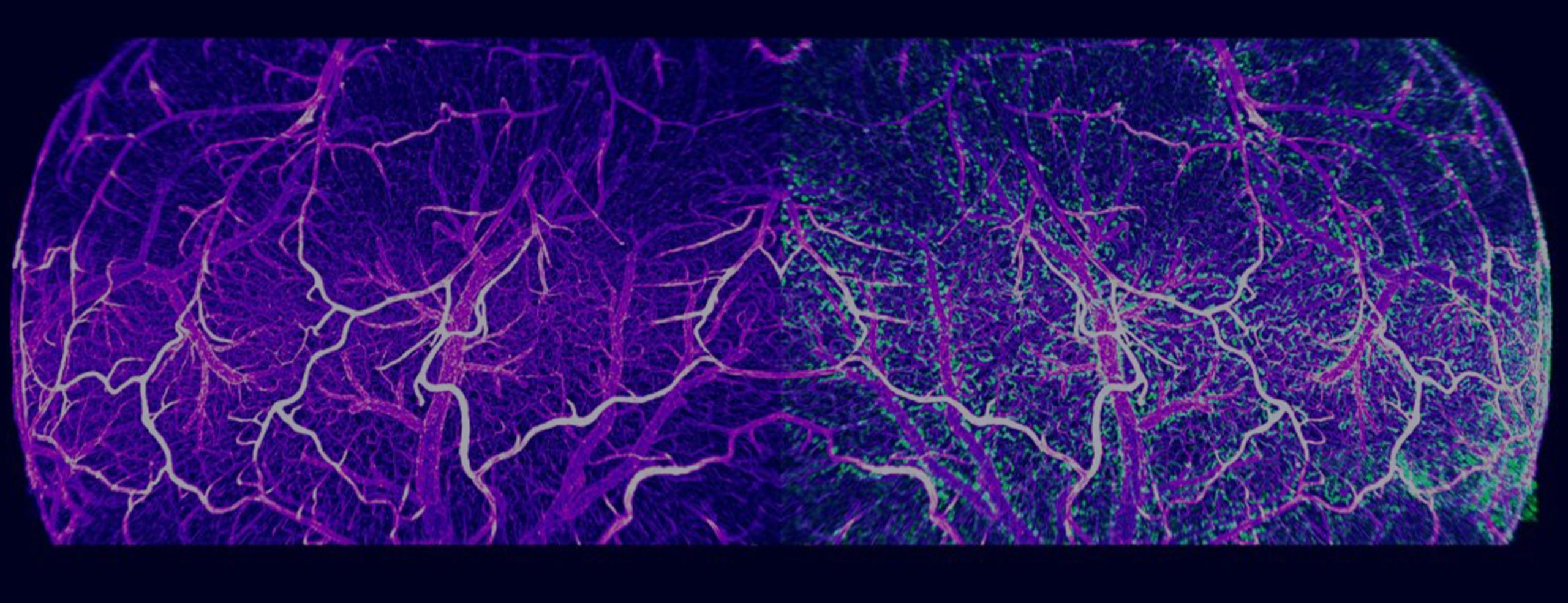Neurolucida and Neurolucida Explorer Used for 3D Reconstruction and Quantitative Analysis Researchers used Neurolucida to reconstruct a newly discovered type of neuron found only in the human brain, according to a study published in the journal Nature Neuroscience. Known as “rosehip” neurons because of the way they resemble a rose after its petals have fallen off, these cells feature compact, bushy axonal arborizations. Found in the first...
Read MoreMBF Products & Service Solutions
Williston, VT – September 5, 2018 – Researchers studying microvascular networks and vessels have a groundbreaking new software application to facilitate their work. Developed by MBF Bioscience, Vesselucida®360 automatically reconstructs and analyzes microvascular networks in 3D. Specifically designed to recognize the intricacies of the vascular system, Vesselucida features sophisticated algorithms that quickly and accurately create 3D reconstructions of images and tissue specimens. Built-in analyses provide data...
Read MoreWilliston, VT – June 29, 2018 – MBF Bioscience is pleased to announce the launch of the Whole Slide Edition of Stereo Investigator. This is a new version of our renown Stereo Investigator software, designed especially for conducting stereology on images from slide scanners. Featuring a streamlined, user-friendly interface, this new product includes a variety of probes for quantifying number, length, volume, and surface area of...
Read MoreFree resource for educators and researchers features thousands of downloadable histology slides Educators and researchers around the world now have free access to a database of whole slide images (also known as virtual slides) for histology and pathology. Featuring thousands of virtual slides contributed by 15 universities, The Virtual Microscopy Database, VMD, (http://www.virtualmicroscopydatabase.org/) is an online resource that allows educators to view and download virtual images...
Read More[caption id="attachment_6839" align="aligncenter" width="632"] Image Courtesy: Bob Jacobs, Ph.D. , Colorado College[/caption] With the release of its new version on November 28, NeuroMorpho.org adds 9,987 new images to its archive, bringing its impressive collection of digitally reconstructed neurons to 80,012. Scientists used MBF Bioscience’s software, Neurolucida and Neurolucida 360, to reconstruct the majority of these cells. In fact, 64 times more neurons were reconstructed with MBF Bioscience...
Read MoreMBF Bioscience unveils whole mouse brain automatic region delineation and cell mapping with the Allen Mouse Brain Reference Atlas
[caption id="attachment_6830" align="aligncenter" width="632"] An experimental coronal mouse brain section automatically aligned to the Allen Mouse Brain Reference Atlas[/caption] Analyzing cellular populations within specific anatomies in brain images requires expertise in both neuroanatomy and cellular identification. This typically involves a scientist comparing experimental images with a reference atlas and manually delineating anatomical regions and marking cell populations within. NeuroInfo®, a revolutionary new technology from MBF Bioscience,...
Read MoreDNA damage occurs in human cells at a constant rate. These cells are usually able to repair themselves, but sometimes deficiencies in certain genes cause the repair process to shut down. When damaged DNA isn't fixed, mutations can occur that cause accelerated aging or cancerous tumors to form (Hoeijmakers, 2009). Scientists at Erasmus University Medical Center in Rotterdam have found a way to slow down...
Read MoreNeuroscientists can now analyze the size and complexity of neurons and collect unbiased stereology data with greater speed and efficiency We are happy to announce the release of Neurolucida and Stereo Investigator version 2017. This version features a completely revamped user interface that’s intuitive and easy to navigate. “Neurolucida and Stereo Investigator version 2017 are completely redesigned to improve the user experience and increase productivity,” said Jack...
Read MoreFollowing a well-designed protocol is essential to achieving accurate and consistent results in scientific research. Now, scientists using Neurolucida 360 for dendritic spine and neuron analysis can follow a published set of guidelines to ensure optimal confocal data series for proper dendritic spine quantification and neuron reconstruction. The paper, written by MBF Bioscience scientists and researchers from the Icahn School of Medicine at Mount Sinai...
Read MoreAstrocytes (GFAP) in the dentate gyrus of a mouse hippocampus. Image courtesy of Dr. Ahmad Salehi, Stanford University. It is well known that physical exercise eases the symptoms of neurodegenerative disorders like Alzheimer’s disease and helps to prevent their onset. Researchers at Stanford University are working on figuring out how it happens. In their study, published in the journal Brain Structure and Function, scientists in Dr....
Read More










